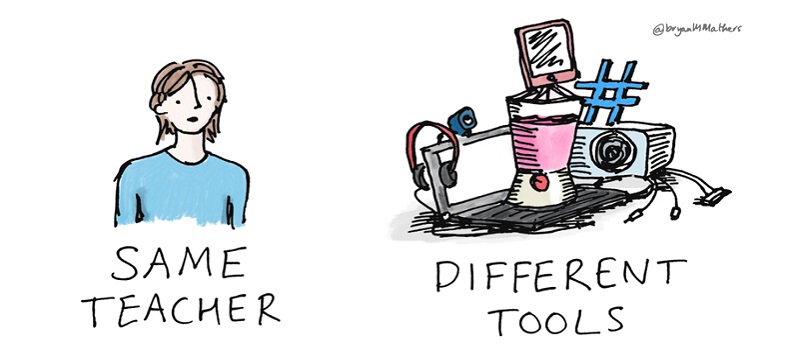1.5 Developing skills and confidence
It is important to note that supporting learners in an online environment requires a different skillset to supporting learners in a face-to-face learning environment. A study by Price et al. (2007) into the differences between learner perceptions of teaching in an online environment and in a face-to-face environment found that the online teacher should have a greater pastoral focus than that of a face-to-face teacher, and that often both teachers and learners needed guidance and training in communicating online.
Without the ‘comfort’ of a physical classroom environment, learners can feel isolated and unsupported, so an increased pastoral presence by the teacher, initiated via online communications, can help reduce that feeling of isolation and develop a more ‘comfortable’ experience for the learner. A large scale, follow-up study by one of Price’s co-authors (Richardson, 2009) which looked at the experiences of learners receiving tutorial support online or face-to-face on humanities courses, concluded that with adequate preparation, the online environment need not be a lesser experience for learners in terms of support: ‘Provided that tutors and students receive appropriate training and support, course designers in the humanities can be confident about introducing online forms of tutorial support in campus-based or distance education.’ (pg. 69)
If you are moving into the online environment with your teaching, you also need to be aware of the complexities that technology may bring. Whilst it is not usually necessary to become a technical expert, familiarity with the common technical issues your learners may face can be a very useful skillset to develop. If, for example, you can advise on the common techniques to resolve audio issues during synchronous online sessions, you can both save time and stress for learners and build their confidence. Your confidence to approach new technologies and to deal with issues that arise in their usage will grow as you gain experience and this makes teaching online a much more pleasurable experience. So set aside some time to play and familiarise yourself with the tools and delivery platforms you expect to use. Also, it is always worth finding out whether there are training or development opportunities focused on the specific online teaching technologies that you expect to use.
Activity 2 Motivating and engaging students online
- Watch this video ‘Engaging and motivating students’ or read the transcript of the video which summarises views from a range of experts on student engagement.
- As you watch or read, make notes or highlight any useful tips that you would like to incorporate into your own online teaching.
Transcript
Week 1, Activity 2, Transcript: Engaging and motivating students
The Importance of Teacher Presence
Creating a Learning Community
Strategies for Motivating Students
Sustaining Participation and Engagement
Discussion
Teaching online brings many opportunities to use different tools and techniques with your learners.
This activity should help you to begin thinking, in broad terms at this stage, about what you might like to try. The upcoming activities will look to develop your ideas further and guide you towards means of trying them out in practice. More on that to come!
1.4 Motivation, support and discipline
